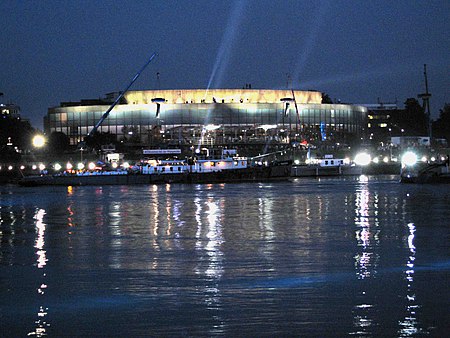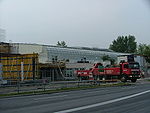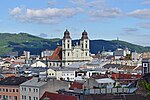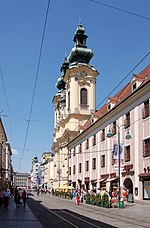Brucknerhaus

The Brucknerhaus (German pronunciation: [ˈbʁʊknɐˌhaʊs] ) is a festival and congress centre in Linz, Austria named after the Austrian composer Anton Bruckner. The building was designed by Finnish architects Heikki and Kaija Siren. Its construction took place from 1969 to 1973. It opened on 23 March 1974. It holds about 200 performances per year, with about 180,000 of total audience. It is home to the International Brucknerfest Linz and the Linzer Klangwolke, two annual musical events. Brucknerhaus has three main halls: Large or Brucknersaal (named after Anton Bruckner): 1,420 seats, standing room for 150 Middle or Stiftersaal (named after Adalbert Stifter): 352 seats, standing room for 40 Small or Keplersaal (named after Johannes Kepler): 100–150 seats
Excerpt from the Wikipedia article Brucknerhaus (License: CC BY-SA 3.0, Authors, Images).Brucknerhaus
Untere Donaulände, Linz Innere Stadt
Geographical coordinates (GPS) Address External links Nearby Places Show on map
Geographical coordinates (GPS)
| Latitude | Longitude |
|---|---|
| N 48.310277777778 ° | E 14.2925 ° |
Address
Brucknerhaus
Untere Donaulände 7
4020 Linz, Innere Stadt
Upper Austria, Austria
Open on Google Maps











